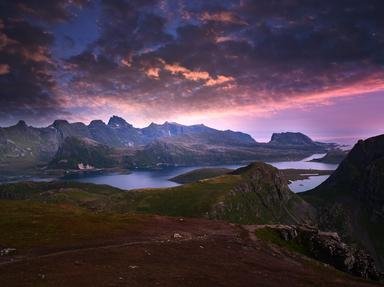Quiz Answer Key and Fun Facts
1. Norway is one of the three Scandinavian countries to have a constitutional monarch in the early part of the 21st century. Which of these, almost sharing his name with two English monarchs, became king of Norway in 1991?
2. The four cities listed are among the northernmost in the world. Which of them could I visit while in Norway?
3. Norway is well known for its explorers. Which of these men does *NOT* fit into that category?
4. Norway's flag has a field (background) in red with a Scandinavian cross of which two colours on it?
5. Norway is particularly known for its fish dishes, with gravlaks (Norwegian spelling) being one of the most popular. Which fish is used for this?
6. Oslo, Norway's capital, was known by which of these names between 1624 and 1924?
7. Which currency would be needed for a visit to Norway during 2011?
8. Vidkun Quisling became President of Norway during the Second World War. His name has been adopted into English with which meaning?
9. Norway became a fully independent country only in 1905 when the union with which neighbouring country was dissolved?
10. Which Norwegian composer wrote the incidental music to accompany Ibsen's play 'Peer Gynt'?
Source: Author
rossian
This quiz was reviewed by FunTrivia editor
trident before going online.
Any errors found in FunTrivia content are routinely corrected through our feedback system.

